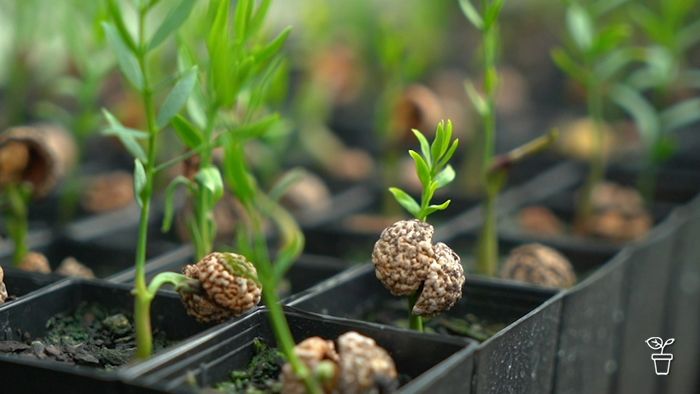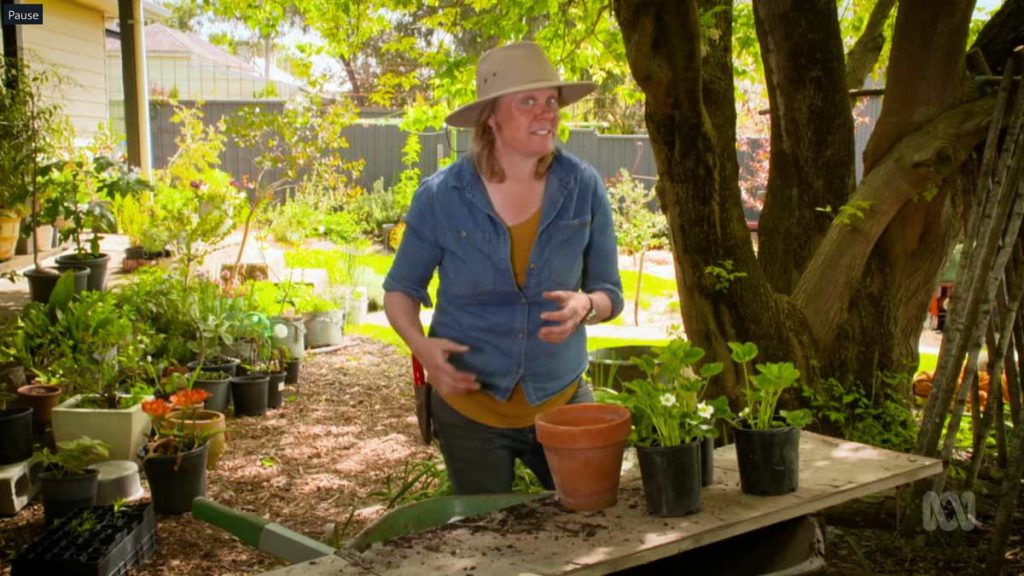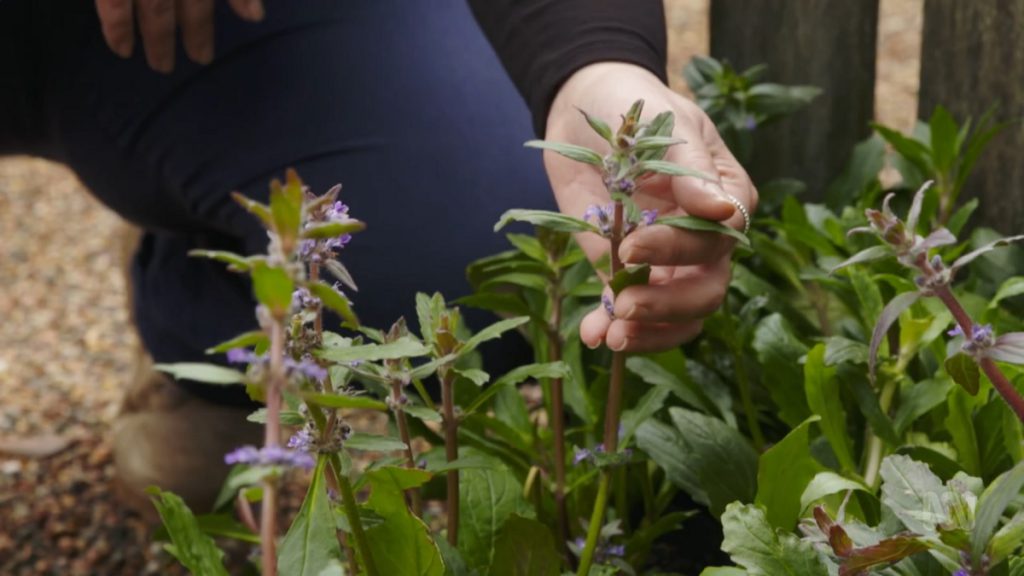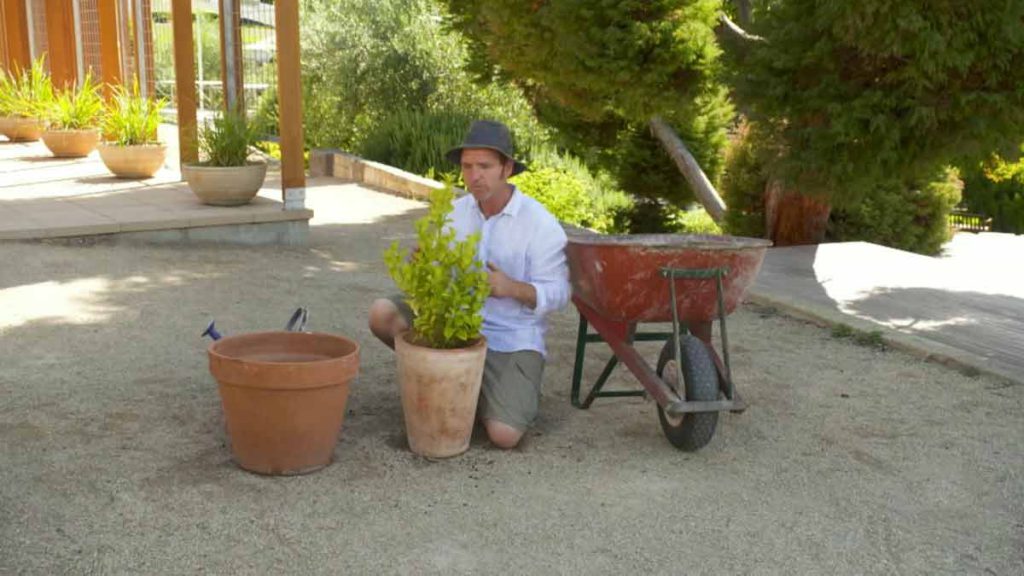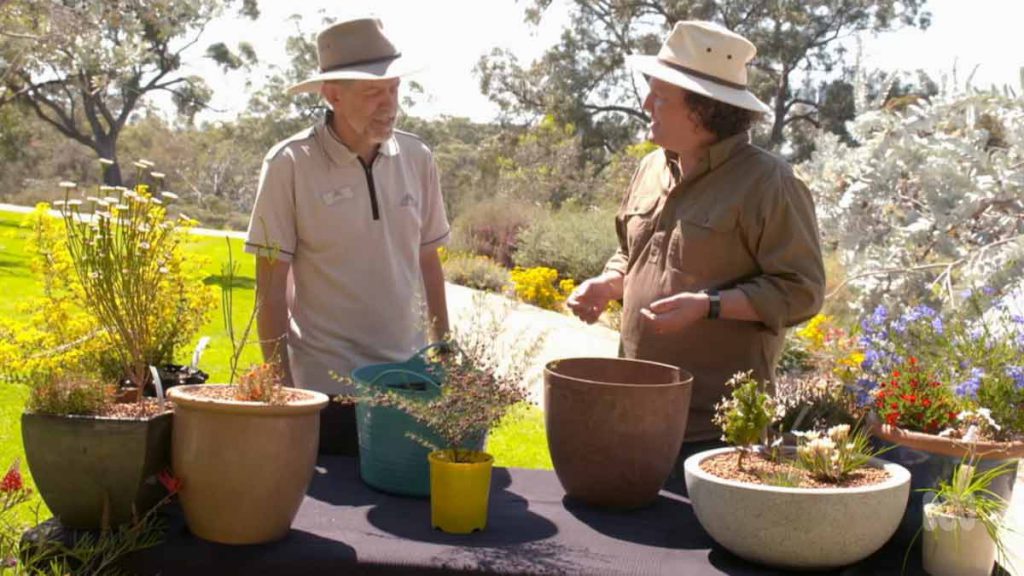Gardening Australia episode 29 2021: Costa Georgiadis makes garlands: Jane Edmanson gives beginner tips; Sophie Thomson learns about bushfood; Jerry Coleby-Williams identifies bugs; Millie Ross finds a rare plant; guest Palisa Anderson tastes tropical fruits.
Inspiring, entertaining and full of practical advice, join Costa Georgiadis and the team as they unearth gardening ideas, meet avid gardeners and look at some of the most inspiring gardens from across the country.
Gardening Australia episode 29 2021
Celebrating Garlands
Costa meets a mother and daughter team who create colourful floral garlands. Soori and Gana run a small business creating gorgeous garlands for weddings and celebrations, catering to diverse communities around Sydney. Soori learned to make the garlands in Sri Lanka. “I learned myself, 16 years old. So these are the traditional garland style made from carnations, typically white and red. As you can see, it’s quite vibrant.” Soori started volunteering at her local temple, making garlands over 25 years ago. Slowly but surely, word of mouth got around about Soori’s garlands and eventually it turned into a business.
Soori’s daughter Gana is a biomedical engineer who is also taking on the family business. “As a child, our house used to always have flowers and never did I stop and go, “Oh, that’s pretty.” Like, I was like, “Cool, flowers,” keep walking. But then I got married and during my wedding ceremony we started looking at the flowers together and that’s when I started going, “Oh, this is actually really fun. “I’m actually really enjoying this.”
Where to Begin – Gardening Australia episode 29 2021
Jane gives some of her best tips for those starting a garden for the very first time. It’s easy to want to run out and buy everything all at once. But this can be compounding any problems that lie ahead. If you can’t say from experience what works in your garden, how will you know all those plants in your shopping trolley are going to work when you get them home? It’s best to start small, try a few plants first and see what survives. Some plants may die, but that helps you learn what suits your garden.
Community gardens are a great place for budding gardeners. Jane meets Isabel Robinson at a garden in St Kilda and she’s interested in growing her own food. Jane’s first piece of advice is to know your area and your soil. The community garden is near the sea and has very sandy soil, so it needs additional nutrients in the form of compost each year, in late winter or early spring. It’s best if the soil is friable which means that it falls apart easily and has a crumbly texture. This provides space and oxygen for the roots to grow. If the soil is compacted, then fork it over, add compost, as this will help.
Bushfood for Backyards
Sophie visits some old friends who are establishing an Australian food plant garden. Sophie visits the new home garden of Mike and Gayle Quarmby in the Adelaide Hills. The Quarmbys ran a large bushfood business at Reedy Creek and have downsized. Their new garden is 3000sq metres and includes an Australian native bushfood demonstration garden for educational purposes. Plants featured can be grown in many garden settings.
I Spy True Bugs – Gardening Australia episode 29 2021
Jerry explains the nature of true bugs and how to identify them in the garden. It is no secret that Jerry is a big fan of bugs, encouraging biodiversity is one of the cornerstones of his Brisbane Garden. Over the years he has meticulously recorded the many insect species that visit, and while the word ‘bug’ is used colloquially to describe almost any invertebrate, true ‘bugs’ are a group in their own – members of the order Hemiptera.
True Bugs are identified by their mouth parts, an elongated rostrum that is designed to pierce and suck. “They’re all juice suckers, but I generally divide them into 2 categories. Those that suck plant juices, in the garden they are the species that you need to watch. The others suck the juice of other insect pests, regular visitors like assassin bugs, they’re predators and I consider them friends!”
There are around 75,000 species of true bugs in the world, and very many can be found in any garden. You just need to look!
Precious Peas
Millie joins a local community project locating and protecting a rare remnant pea species. Marty Roberts is the Bushland Manager for Macedon Ranges Shire council, some 22 reserves in all. Across the shire these include a range of remnant vegetation types, from Mountains to wetlands to woodlands. At 95 hectares of grassy woodland, Bald Hill reserve is the largest in the shire, and one of the most precious. This vegetation type is one of the most fertile and as a result, has been largely targeted for agricultural use.
Marty says this reserve is incredibly diverse. It is renowned for its wildflowers and spectacular granite outcrops and in the 1990’s a member of the Bald Hills Reserve friends’ group, identified a remnant population of an important plant species – the clover glycine. Glycine latrobeana is listed as a nationally threatened species, it occurs in NSW, Vic, Tas and SA, it is endangered in all those places.
Re-Using Plastic Pots
Josh explains how to re-use plastic pots. Every time I’m planting in the garden, I’m reminded of a perennial problem – what to do with plastic pots?
Most plastic plant pots are made from polypropylene as identified by the number 5 in the triangle on the bottom of the pot. This material is highly recyclable, but not all kerbside pick-up recycling operations can process the material, so it’s best to check with your local council if you are unsure. There are also some dedicated recycling schemes for pots where you can drop them off, and you can contact your local garden centre to see if there’s one near you.
Before you recycle them, you can also repurpose them at home. I like to use old pots for home propagation. Just make sure you wash and sterilize them first for good hygiene. They also make handy storage containers for tools and things like twine. Or you can remove the base of the pot and turn it into a planting collar, which you put over a new seeding when you plant it to protect it from earwigs or slaters.
Tropical Treats – Gardening Australia episode 29 2021
Palisa visits a tropical fruit growing legend to learn about organic fruit growing. Palisa pops next-door to visit her neighbour and friend, one of the region’s legendary fruit-growers John Picone. We first visited him in 2014, when Jerry ate his way around John’s little orchard. “When Jerry visited it was so young. The orchard is now a forest! It has its own little climate”. On his 60-hectare property, his little 1-hectare orchard has been providing the sweetest treats for the community for decades.
Each week, he and his wife Lyndall, pick and pack an abundance of flavours from the orchard, to sell at local markets. “Truthfully, if I was a young man, I would quadruple what we are doing here, we can ‘t keep-up supply. But as it is, we only have the capacity to supply our region, so that is what we do”.
It was here that he and Palisa first got chatting, “she would come to the stall and be amazed by the fruit. She kept bugging me to come and see the orchard and finally I relented! She and her family were like kids, so excited, running around. They kept asking me to grow certain things, but I’m too old for that! Instead, I told them. The place next door is for sale, why don’t you buy it and do it yourself? So, they did!”
My Garden Path – Andrew Laidlaw
We follow the path of landscape architect Andrew Laidlaw, to learn more about his own life and his role in creating some of Melbourne’s most beloved landscapes.
Andrew Laidlaw is a landscape architect who has worked at the Royal Botanic Gardens Melbourne for 20 years. He’s the mind behind many of the garden’s most loved spaces including the Children’s Garden, Fern Gully and Arid Garden. “What I’m most passionate about is actually creating landscapes that are full of plants, that obviously create beauty and that people respond to, but I suppose the thing I get the biggest thrill out of is my plants and the planting design that I can bring to those landscapes.”
